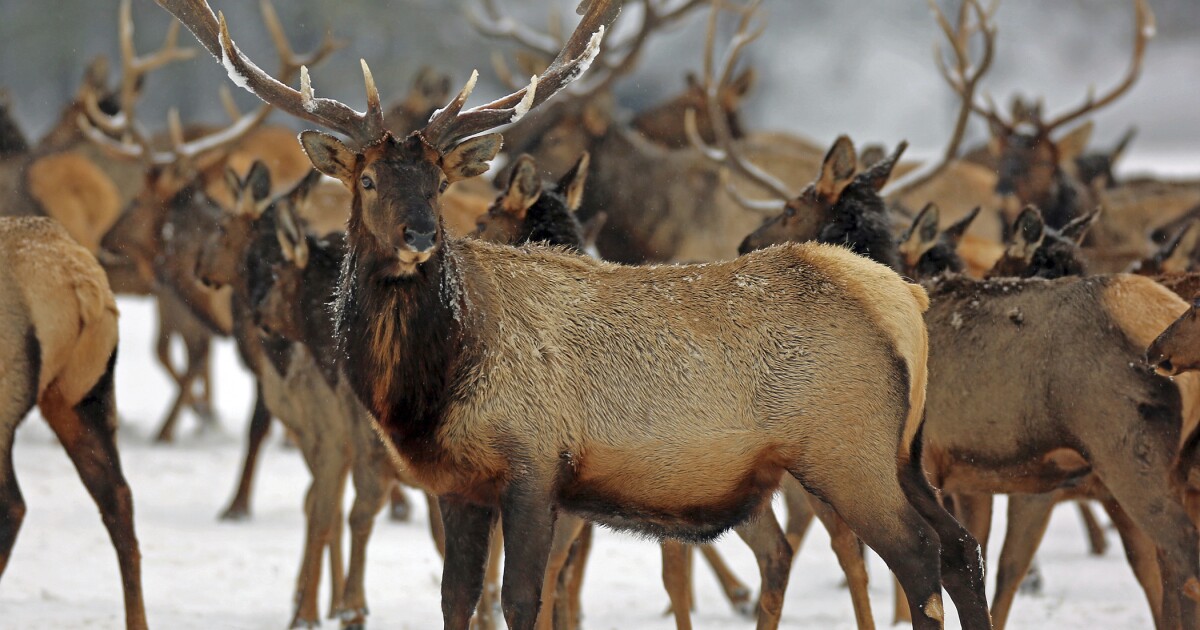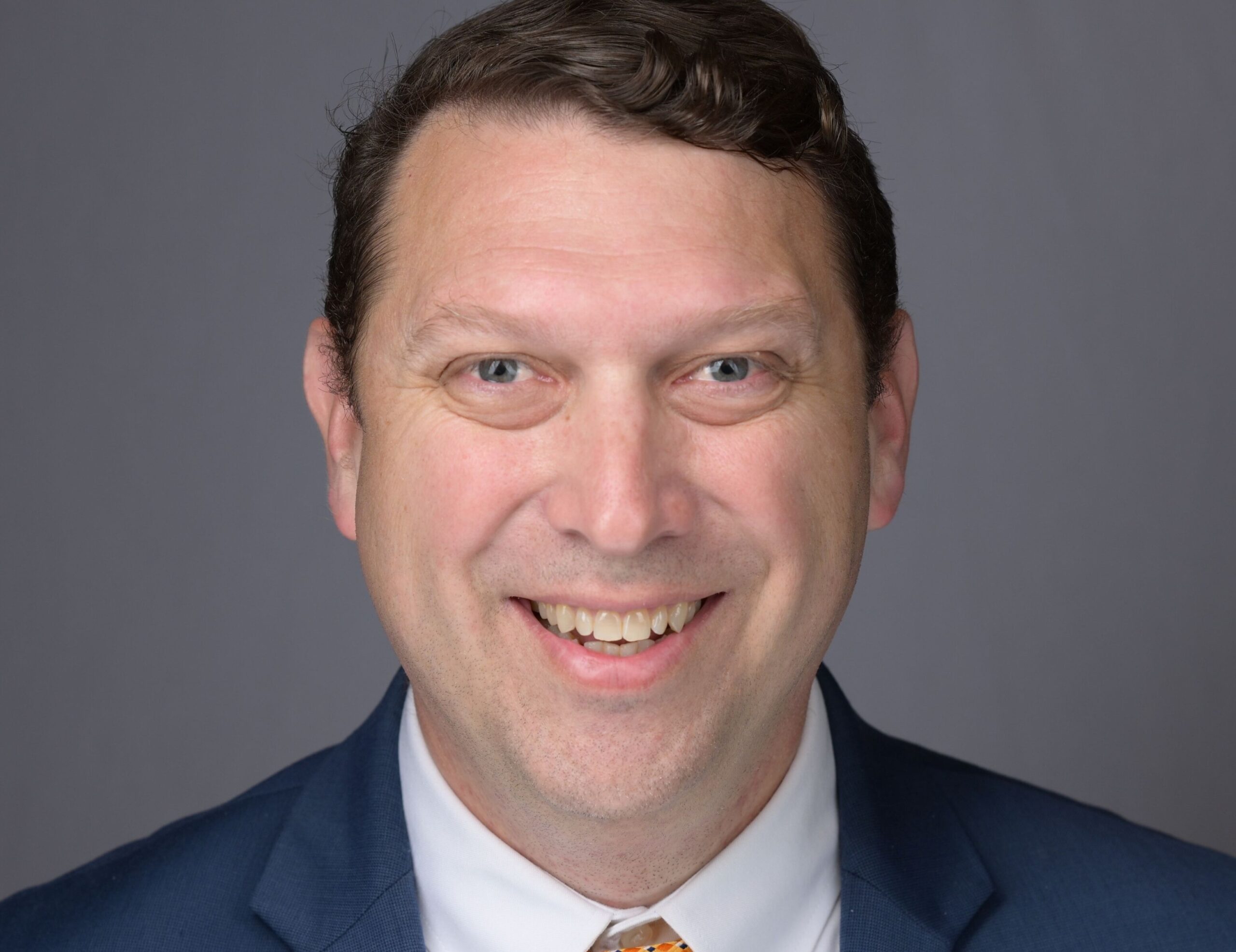Idaho
Air Idaho Rescue celebrates 5 years of service in Salmon – East Idaho News

The following is a news release and photo from Air Idaho Rescue.
SALMON – The Salmon community joined the Air Idaho Rescue crew for a special gathering at the Salmon City Park on Thursday to mark the base’s fifth anniversary.
Guests included representatives from Steele Memorial Hospital, Challis Area Health Center, Lemhi County Sheriff’s Office, Lemhi County EMS, Salmon Search and Rescue, Lemhi County Fire Protection District, and Lemhi County Probation.
“Five years ago, we sat down and looked at a map and said, ‘Where can we do the most good?’ Salmon was one of those areas where we thought we could help the most people, and it has definitely been proven that our services are needed,” said Mike Jenkins, area manager for the Air Idaho Rescue program. “We really appreciate the partnerships we have built and the way you’ve welcomed us into your community.”
Among the many guests who spoke at the celebration was Lemhi County Sheriff Steve Penner, who talked about Air Idaho Rescue’s role in the EMS community and the impact the program has had on the emergency care residents receive.
RELATED | I flew with Air Idaho Rescue for a day. Here’s what I learned.
“They have really acclimated well and became part of the first responder family and are part of the community,” said Penner. “But more importantly, there have been a few times when their (fast) response time really benefitted the outcome of the patient, if not saved their life, and that is what it is all about.”
CEO of Challis Area Health Center Steve Rembelski remarked on the program’s value to the people of Lemhi County given the remote nature of the area and the distance to higher levels of medical care.
“When we talk about time sensitive emergencies, minutes truly make a difference,” said Rembelski. “Prior to Air Idaho being in Salmon, it could take up to an hour and thirty minutes to get an aircraft to our facility, and I have truly seen patients on their knees praying for every minute.”
Though the crews always put safety first, Rembelski says they are skilled, kind and compassionate.
RELATED | Air Idaho Rescue prepares for upcoming tourist season with re-opening of emergency medical base
About 40 guests enjoyed a casual lunch while getting an up-close look at a helicopter that flew in from West Yellowstone. The aircraft serving Salmon was out on a call.
Family members of former patients expressed their appreciation, and Lenny Skunberg and Ilona McCarty, who lease the hangar and crew quarters, shared their gratitude for the program.
Not only are residents thankful to have Air Idaho Rescue in their backyard, but the crew is grateful to be part of such a warm and welcoming community and is proud to offer the highest level of emergency air medical care.
RELATED | Air Idaho Rescue now carrying whole blood on every flight
“Our clinicians really are amazing at their jobs,” said Alex Waldron, a pilot with Air Idaho Rescue. “They love to do it … and it is awesome to watch someone that is so good at their job. I’m lucky to work here, and the community is lucky to have the nurses and the medics working for Air Idaho here.”
=htmlentities(get_the_title())?>%0D%0A%0D%0A=get_permalink()?>%0D%0A%0D%0A=htmlentities(‘For more stories like this one, be sure to visit https://www.eastidahonews.com/ for all of the latest news, community events and more.’)?>&subject=Check%20out%20this%20story%20from%20EastIdahoNews” class=”fa-stack jDialog”>

Idaho
After receiving support during Idaho's wildfire seasons, our firefighters are headed to California • Idaho Capital Sun

Idaho firefighters are making their way to assist and protect communities threatened by wildfires burning in the greater Los Angeles area in southern California.
More than 100,000 people have been evacuated from their homes, and at least five fires are burning covering more than 45 square miles there, according to NBC News.
The state of Idaho is mobilizing five task forces in a response to a request from the California Governor’s Office of Emergency Services through the Emergency Management Assistance Compact, according to a press release from the Idaho Office of Emergency Management.
“The Idaho Office of Emergency Management and the Idaho Fire Chiefs Association have coordinated efforts to evaluate available resources across the state,” and ” stand ready to provide additional assistance as needed,” the press release said.
As of Wednesday evening, 104 firefighters and 25 fire engines from Idaho were preparing to deploy this morning to support California’s response efforts, and the task forces are set to arrive in southern California on Friday, the press release stated. The task forces were mobilized from fire agencies throughout the state, including personnel from the city of Emmett and Kootenai County, as well as the Idaho National Laboratory in southern Idaho.
“Emergencies like these remind us of the critical importance of teamwork and mutual aid,” said Idaho Fire Chiefs Association President Kirk Carpenter in the release. “Idaho firefighters are prepared to join the fight in California, standing shoulder to shoulder with our partners to protect communities in harm’s way.”
The assistance compact has been invaluable to states facing wildfire, “ensuring that states can rely on each other during crises,” said Idaho Office of Emergency Management Director Brad Richy said in the release.
“After receiving support during our own wildfire seasons, Idaho is proud to return the favor by providing resources and personnel to help protect California’s communities,” he said.
The Emergency Management Assistance Compact was ratified by the U.S. Congress (Public Law 104-321) in 1996 and applies to all 50 states, the District of Columbia, Puerto Rico, Guam, the U.S. Virgin Islands, and the Northern Mariana Islands. The compact’s members can share personnel and resources from all disciplines, protect personnel who deploy to emergencies and be reimbursed for mission-related costs, according to the compact’s website.
“The EMAC is a vital interstate compact that provides a proven mutual aid framework allowing states to share resources during times of disaster or emergency,” the release stated. “All costs associated with deploying resources under EMAC are paid for by the requesting state.”
YOU MAKE OUR WORK POSSIBLE.
Idaho
Idaho mobilizes 100+ firefighters to help battle blazes in Los Angeles

BOISE, Idaho — In response to the devastating wildfires currently sweeping across Los Angeles County, Idaho will send five task forces to help protect communities threatened by the ongoing fires.
Sand Hollow Fire Protection District preparing to deploy to SoCal fires
The move comes in response to a request from the California Governor’s Office of Emergency Services. In total, Idaho will send 104 firefighters and 25 fire engines to the Los Angeles area on Thursday morning. The task forces, which were coordinated by the Idaho Office of Emergency Management and the Idaho Fire Chiefs Association, hope to be in place on Friday.
IFCA president, Kirk Carpenter says the task forces are ready to “stand shoulder to shoulder with our partners to protect communities in harm’s way.”
As of this writing, 5 people have perished in the various fires ravaging Los Angeles County and 100,000 have been evacuated from their homes.
Idaho
Idaho just received its second domestic case of Chronic Wasting Disease: What is it and what does that mean?

Chronic Wasting Disease, or CWD, is a deadly and incurable neurological illness. Idaho just received its second confirmed case in domestic elk.
What is Chronic Wasting Disease
CWD is a prion disease, a type of illness not caused by viruses or bacteria, but instead by misfolded proteins called prions. When enough prions enter the body, they can create a chain reaction of damaging normal proteins in the body which leads to cell destruction and neurological damage, and inevitably, death of the organism.
Prion diseases are currently incurable and the only known ones occur in mammals. CWD affects animals in the deer family (cervids) such as but not limited to: moose, caribou, mule deer, reindeer, red deer, and elk. CWD was first found in Colorado in 1967, but through the years has been detected across the globe.
“It’s in Asia, Europe and North America,” said Professor Mark Zabel with the Prion Research Center at Colorado State University
How is it spread?
Zabel said that the disease can be transferred directly–for instance from a sick moose to a healthy moose–as well as transferred indirectly due to the prions’ infectious properties,
“…unlike many most other pathogens, it’s very stable in the environment. So it can remain infectious in the environment, in soil and landscapes. For years to decades.”
Prions get into the environment (soil, water, plants, etc) through excretion by infected animals, such as through their urine, feces, saliva, and decomposing bodies. Then, due to the prion’s very stable protein structure, they’re able to stay infectious for up to 20 years. This means other animals can pass through the environment, and pick up the prions laid decades past, and still get infected.
Abigail Moody
/
Boise State Public Radio
CWD is difficult to detect because animals may be infected for long periods of time without showing signs due to the disease’s incubation period. On average, the time between initial infection and first signs of it is 18 to 24 months long.
Concerns of the Disease
Not only is CWD an ecological concern due to the difficulty of combating it, but it is also a severe economic issue regarding wildlife and agriculture governmental agencies. The most recent data shows the government as spent $280 million dollars on CWD from 2000-2021. A majority amount of that was spent by the U.S. Department of Agriculture’s Animal and Plant Health Inspection Service.
Idaho first saw CWD in wild mule deer in 2021. Within the past two months, there have been two confirmed cases of domestic elks that were from different elk farms, meaning, they couldn’t have infected one another. In Idaho’s 2021-2022 fiscal year, wildlife agencies spent close to $225,000 trying to combat CWD.
Zabel told me his main concern as a scientist is “…this disease could spread to humans, you know. So it has some zoonotic potential, similar to another prion disease that people might be aware of called bovine spongiform encephalopathy or BSE. Probably more commonly known as mad cow disease.”
When someone eats beef contaminated with Mad Cow disease, a variant of the prion disease from the cow can be made to infect a human. For now, CWD does not have the ability to change to infect humans, but since it is a prion disease, it is possible that it could develop one.
What you can do to stay safe and help
Zabel encourages hunters to follow state practices to reduce the possible spread of CWD and to test their harvest before eating. There’s no evidence yet that CWD can transfer from cervid to human but Zabel told me,
“I would definitely not want to be the reference case. I don’t want to be patient zero.”
This past year, Idaho Fish and Game released hunting guidelines to reduce the spread of CWD . The agency also offers free testing kits for hunters to help track the disease by sending in samples of their game.

Roger Phillips
/
Idaho Fish and Game
-

 Business1 week ago
Business1 week agoThese are the top 7 issues facing the struggling restaurant industry in 2025
-

 Culture1 week ago
Culture1 week agoThe 25 worst losses in college football history, including Baylor’s 2024 entry at Colorado
-

 Sports1 week ago
Sports1 week agoThe top out-of-contract players available as free transfers: Kimmich, De Bruyne, Van Dijk…
-

 Politics7 days ago
Politics7 days agoNew Orleans attacker had 'remote detonator' for explosives in French Quarter, Biden says
-

 Politics6 days ago
Politics6 days agoCarter's judicial picks reshaped the federal bench across the country
-

 Politics5 days ago
Politics5 days agoWho Are the Recipients of the Presidential Medal of Freedom?
-

 Health4 days ago
Health4 days agoOzempic ‘microdosing’ is the new weight-loss trend: Should you try it?
-

 World1 week ago
World1 week agoIvory Coast says French troops to leave country after decades














